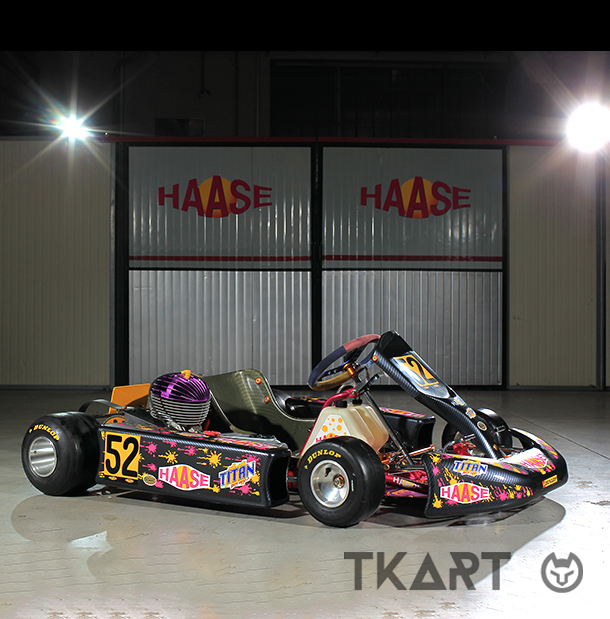In the ‘90s, the karting sector saw a proliferation of unconventional chassis: the Parolin Revolution, Birel Torsion, Swiss Hutless Rondo... are all examples of projects that thought outside the box. The category comfortably includes the Pulsar, a model approved in 1997 by Haase Kart. The peculiarity of the chassis is obvious: longerons that go from the rear end all the way to the C of the stub axle, crossing over each other at the height of the tank. An unprecedented design, never seen before nor after, the production of which was not straightforward: "For the first example, we had to scrap a huge amount of tubes before managing to produce the longerons with the right bends" - says Massimiliano Piacentini, who was a senior engineer at Hasse for years and worked on the development of the project. Given the high number of bends in close proximity, incorrectly executed bends, which could occur due to the different elasticity of the various sections of tube in the warehouse, it was quite challenging to correct mistakes. The difficulties must also be seen in light of the machinery available at the time, which were undoubtedly less technological than modern ones: a numerically controlled tube bending machine, which produces finished components from a 3D design, would certainly have made things easier.
The tubes of the chassis are 32 mm in diameter, except for the two short tubes at the front end that join the longerons, not included in the homologation as they are less than 250 mm in length and, therefore, used in different sizes: 28, 30 and 32mm, depending on the handling required out on the track. The most interesting point of the frame, as mentioned, is the longerons that cross over each other at the height of the tank. More specifically, the left longeron passes under the right one: from the point of view of the set-up, changing the order of the tubes where they crossed modified the response of the chassis: “The standard solution was better for right-hand corners - underlines Piacentini - while the other benefitted left-hand cornering. Given that, at that time, most of the tracks went clockwise, it was decided to adopt the version with the left longeron underneath as standard."

 Exclusive Content
Exclusive Content
